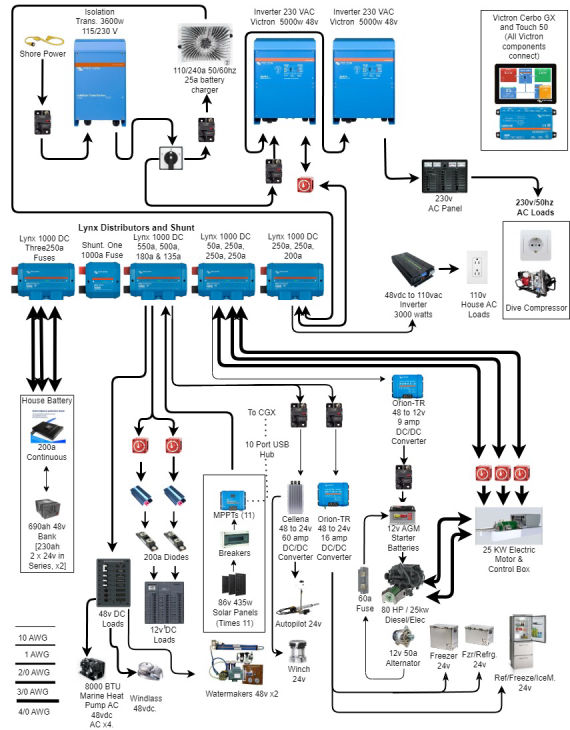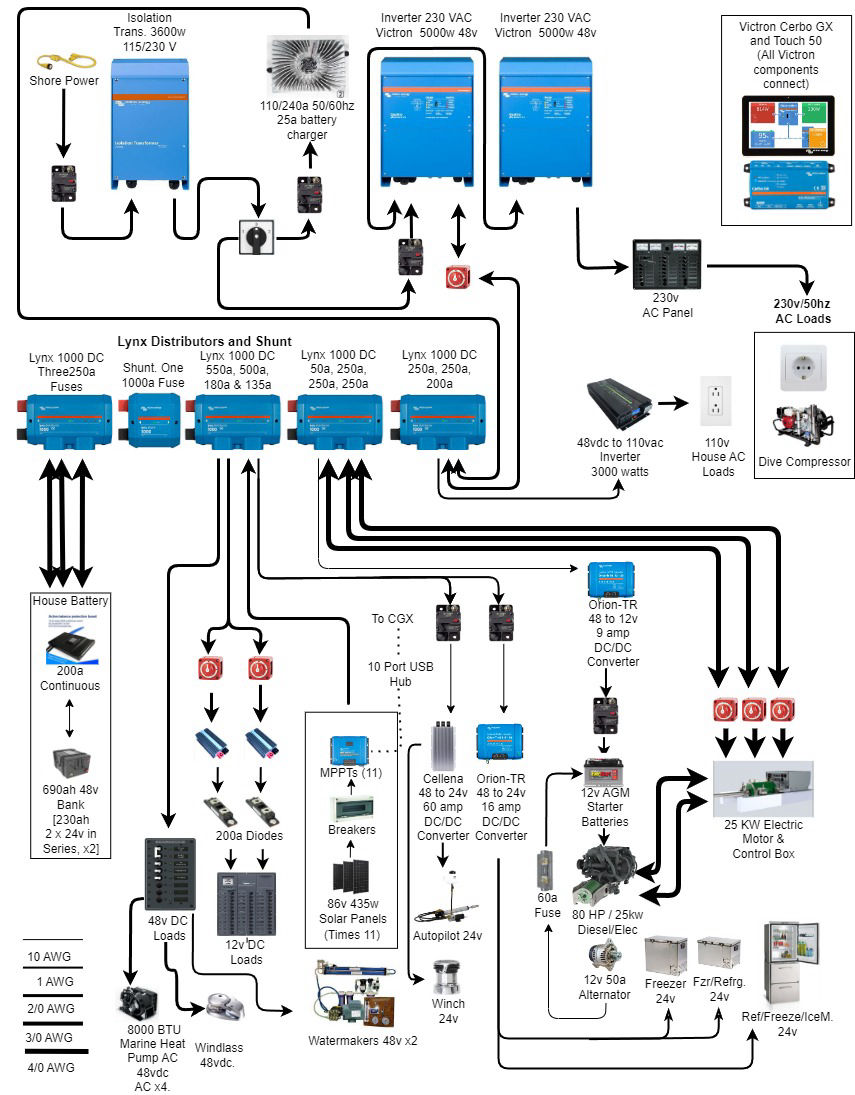Here it the layout of our proposed Combo Hybrid/Diesel Propulsion System. This includes all of the connected parts and systems, not just the batteries, motors, and engines. This diagram is, most definitely, a work in progress. Anyone who wishes to help improve this system is welcome to contact us here: Contact S/V Lynx
We do not claim to be experts at designing such systems and boat owners who have already built their electrical system (whether that includes electric propulsion or not) or have other experience in this area, please feel free to help. We would love your input in creating our system design. This schematic is our current design at the full system; however, we plan to modify it as we get feedback until it passes muster. Later, we will show our proposed system diagram to some marine electrical engineers to iron out issues we didn't know or plan for, long before we start to purchase any portions of this system.
So, take a look at our goals (below), and then feel free to send us your suggestions, corrections, etc. The only thing we don't really want is someone to try and talk us out of a Combo Hybrid/Diesel Propulsion system, we just want the best design to make it work. Thank you!
If you want, you may use this button to jump down to a full screen copy of the Hybrid Schematic.


